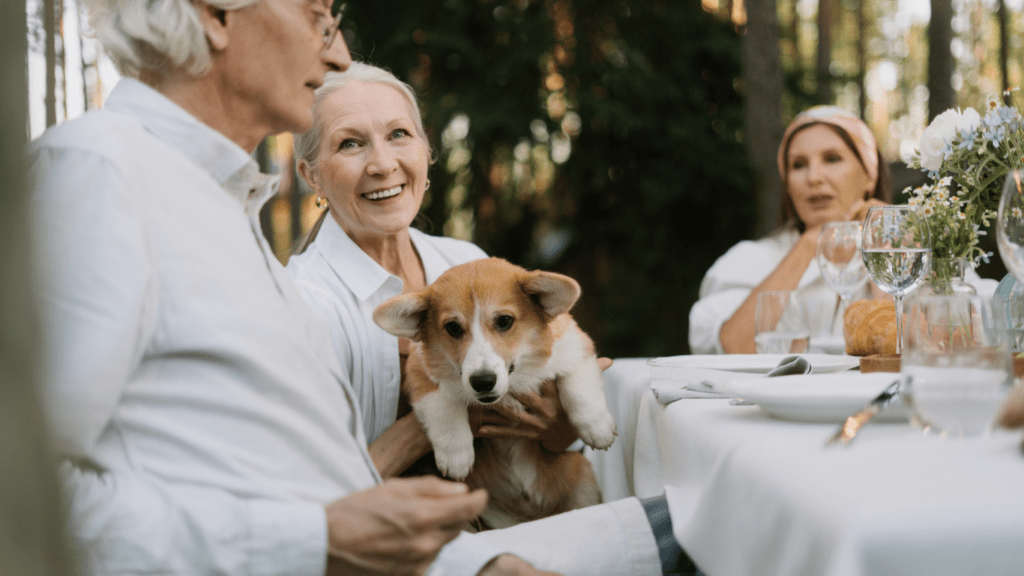As a pet owner, I understand the unique challenges that come with training senior pets. Adapting training techniques for older animals is essential to ensure their well-being and happiness in their golden years. In this article, I’ll share valuable insights on how to modify training methods to suit the needs of aging pets.
Training senior pets requires patience, understanding, and a tailored approach that considers their individual abilities and limitations. By adjusting your training strategies to accommodate their changing physical and cognitive abilities, you can create a positive and enriching learning experience for your older furry companion.
Join me as we explore effective ways to train and bond with senior pets, making their later years fulfilling and enjoyable.
Exploring Challenges in Training Senior Pets
Training senior pets can present unique challenges due to their changing physical and cognitive abilities. Adapting techniques is crucial to ensure effective training and a positive learning experience for older animals.
Reduced Mobility and Flexibility
As pets age, they may experience reduced mobility and flexibility, making certain training activities more challenging for them. It’s important to adjust training exercises to accommodate their physical limitations.
For instance, opting for low-impact activities like gentle walks instead of intense running sessions can help keep them active without straining their joints.
Cognitive Decline in Older Animals
Senior pets may also undergo cognitive decline, which can affect their ability to learn new commands or recall previously acquired behaviors. Simple cues and commands, along with patience and repetition, are key to successful training sessions with older animals.
Additionally, using positive reinforcement techniques such as treats and verbal praise can help motivate and engage senior pets during training.
Tailoring Training Methods for Senior Pets
Patience and Understanding
When training senior pets, it’s vital to approach sessions with patience and understanding. Older animals may take longer to grasp new commands or may need more breaks during training.
By being patient and empathetic, I can create a positive and stress-free learning environment for my senior pet.
Physical Limitations Consideration
Understanding the physical limitations of senior pets is crucial in tailoring training methods. I need to consider factors like reduced mobility and flexibility when planning training activities for older animals.
Adjusting exercises to accommodate their limitations ensures a safe and effective training routine for my senior pet.
Implementing Positive Reinforcement Techniques
- Use Positive Reinforcement:
Reward senior pets with treats, praise, or toys to motivate them and ensure a successful learning experience. - Implement Key Strategies:
Apply effective techniques to encourage older animals to learn new skills and behaviors through positive reinforcement.
Adapting to Senior Pet’s Pace
I adapt to a senior pet’s pace by setting realistic expectations and allowing for longer learning periods. It’s essential to be patient and understanding, giving older animals the time they need to process information and respond.
By adjusting the training sessions’ duration and intensity to match their capabilities, I create a comfortable and encouraging environment for senior pets to thrive in.
Addressing Behavioral Changes in Older Animals
Managing behavioral changes in older animals requires a different approach compared to younger pets. Older pets may exhibit changes in behavior due to various factors, such as medical conditions, cognitive decline, or discomfort.
Understanding and addressing these behavioral shifts are crucial for maintaining the well-being of senior pets.
Adapting to their altered behaviors involves patience and observation. It’s important to be attentive to any changes in their actions or routines.
For instance, sudden aggression, confusion, increased vocalization, or changes in eating habits may indicate underlying issues that need to be addressed promptly.
Incorporating mental stimulation activities can be beneficial for older pets experiencing cognitive decline. Engaging them with interactive toys, puzzles, or short training sessions can help keep their minds active and prevent boredom or frustration.
Creating a comfortable and familiar environment is essential for senior pets. Providing easily accessible resources like food, water, and bedding can help reduce stress and anxiety.
Additionally, maintaining a consistent routine can offer a sense of security and stability for older animals.
Consulting with a veterinarian is crucial when dealing with significant behavioral changes in senior pets. Professional guidance can help identify any underlying medical issues contributing to the behavioral shifts and determine appropriate interventions or treatments to improve their quality of life.
By recognizing and addressing behavioral changes in older animals promptly, pet owners can ensure their senior pets receive the care and support they need to age gracefully and enjoy a comfortable and fulfilling life.


 Noranna Frazieral has played a crucial role in shaping the content for Animal Potty Care, focusing on pet diet and wellness. Her deep understanding of pet nutrition ensures that the platform offers well-rounded guidance on maintaining a balanced and healthy diet for pets. Noranna’s contributions help pet owners make informed decisions about their pets' diets, promoting long-term health and well-being. Her input has made the platform a trusted resource for those looking to improve their pets' quality of life.
Noranna Frazieral has played a crucial role in shaping the content for Animal Potty Care, focusing on pet diet and wellness. Her deep understanding of pet nutrition ensures that the platform offers well-rounded guidance on maintaining a balanced and healthy diet for pets. Noranna’s contributions help pet owners make informed decisions about their pets' diets, promoting long-term health and well-being. Her input has made the platform a trusted resource for those looking to improve their pets' quality of life.